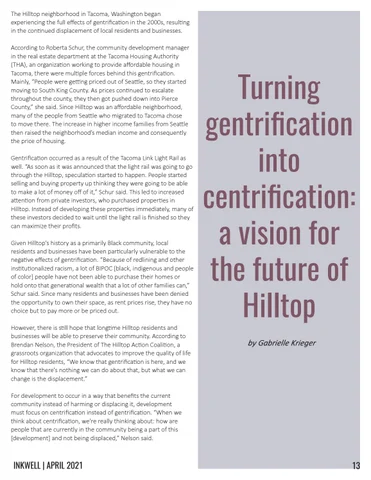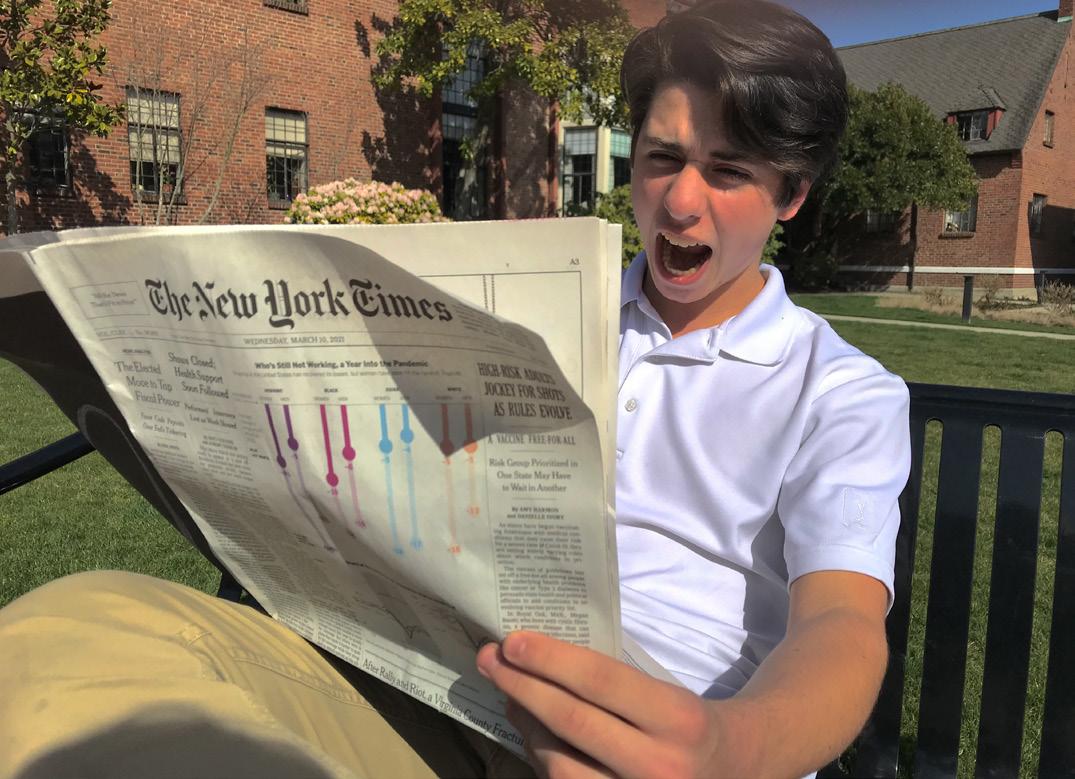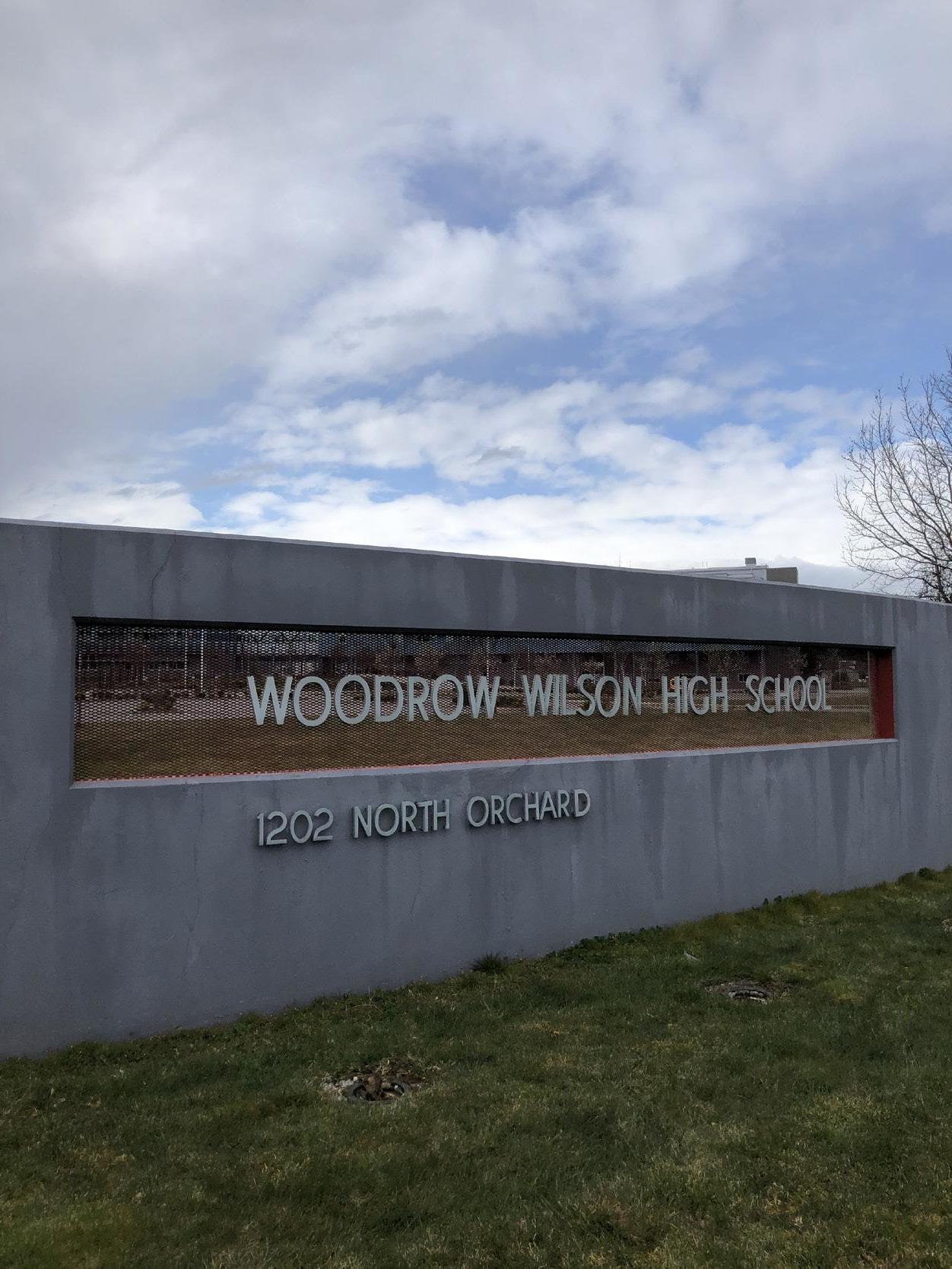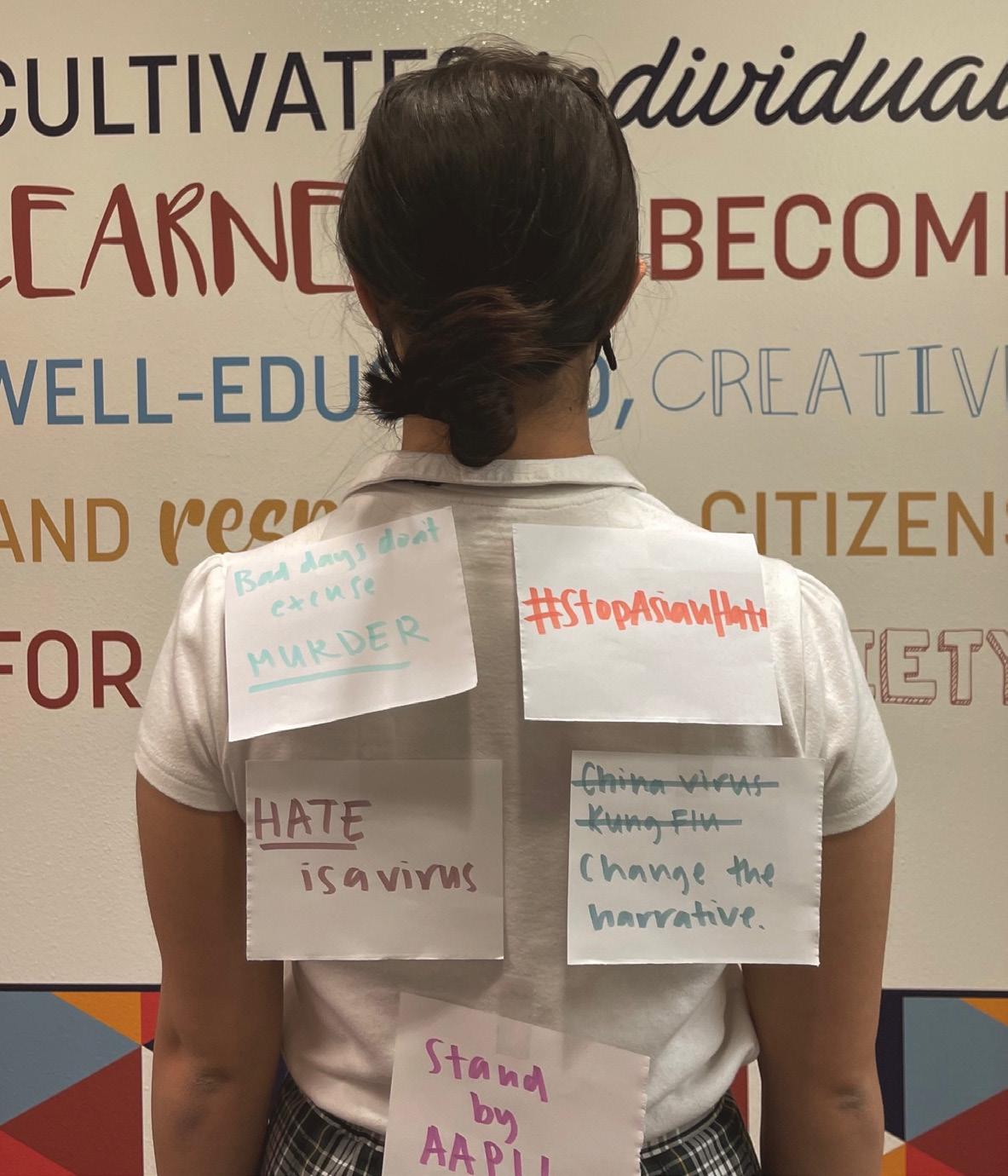The Hilltop neighborhood in Tacoma, Washington began experiencing the full effects of gentrification in the 2000s, resulting in the continued displacement of local residents and businesses. According to Roberta Schur, the community development manager in the real estate department at the Tacoma Housing Authority (THA), an organization working to provide affordable housing in Tacoma, there were multiple forces behind this gentrification. Mainly, “People were getting priced out of Seattle, so they started moving to South King County. As prices continued to escalate throughout the county, they then got pushed down into Pierce County,” she said. Since Hilltop was an affordable neighborhood, many of the people from Seattle who migrated to Tacoma chose to move there. The increase in higher income families from Seattle then raised the neighborhood’s median income and consequently the price of housing. Gentrification occurred as a result of the Tacoma Link Light Rail as well. “As soon as it was announced that the light rail was going to go through the Hilltop, speculation started to happen. People started selling and buying property up thinking they were going to be able to make a lot of money off of it,” Schur said. This led to increased attention from private investors, who purchased properties in Hilltop. Instead of developing these properties immediately, many of these investors decided to wait until the light rail is finished so they can maximize their profits. Given Hilltop’s history as a primarily Black community, local residents and businesses have been particularly vulnerable to the negative effects of gentrification. “Because of redlining and other institutionalized racism, a lot of BIPOC [black, indigenous and people of color] people have not been able to purchase their homes or hold onto that generational wealth that a lot of other families can,” Schur said. Since many residents and businesses have been denied the opportunity to own their space, as rent prices rise, they have no choice but to pay more or be priced out. However, there is still hope that longtime Hilltop residents and businesses will be able to preserve their community. According to Brendan Nelson, the President of The Hilltop Action Coalition, a grassroots organization that advocates to improve the quality of life for Hilltop residents, “We know that gentrification is here, and we know that there’s nothing we can do about that, but what we can change is the displacement.”
Turning gentrification into centrification: a vision for the future of Hilltop by Gabrielle Krieger
For development to occur in a way that benefits the current community instead of harming or displacing it, development must focus on centrification instead of gentrification. “When we think about centrification, we’re really thinking about: how are people that are currently in the community being a part of this [development] and not being displaced,” Nelson said.
INKWELL | APRIL 2021
13











